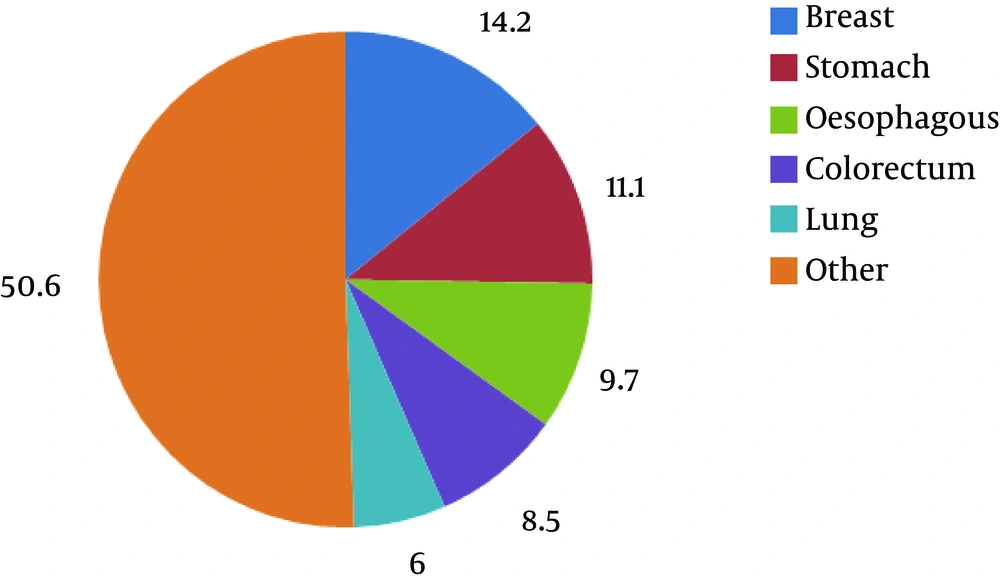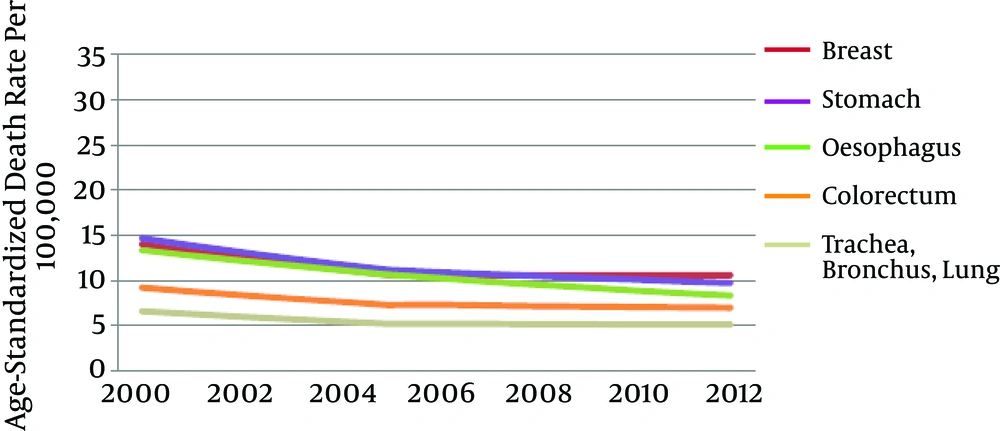Dear Editor,
Breast cancer (BC) is the most common neoplasm in females around the world, and it has been estimated that about 41000 women die of this disease each year (1). Its prevalence in Western Europe and Northern America is between 8 and 10% while in Asian countries is approximately 1% (2). However, the rates in women living in developing regions are rising (3).
During the past decade, BC has become the most frequent malignancy among Iranian women (4). Based on the world health organization (WHO) report in 2014 (5), 14.2% of all cancer-related mortality among women in Iran (23300 deaths), is due to BC (Figure 1).
Also, despite other cancers that have had a decreasing trend in mortality in the recent years, according to Figure 2, BC mortality trend is flat and has even had a slight increase among Iranian women (5).
In 2011, about half of the women, 15 to 64 years of age were overweight or obese and had low physical activity and only 2% of them had no risk factor (6). Therefore, the mean age is at least 10 years younger than women with the same malignancy in developed countries and a longer period of time is spent with the disease (5). Women with BC in Iran due to some cultural issues encounter many psychosocial stresses and physical problems (6), and unfortunately the role of husbands in supporting patients and fostering self-efficacy in Iranian BC patients is low (7).
In low and middle income countries including our country where BC is diagnosed in very late stages, early detection in order to improve breast cancer outcome and survival is the cornerstone of BC control (8). Mammography remains the main screening tool that can reduce the rate of death from this cancer by about 40% (8).
Self-efficacy affects quality of life of patients and their self-care behavior, but it decreases over time, therefore due to long term engagement among Iranian women it is recommended to increase the role of factors such as education (7), that have important effects on the level of self-efficacy in BC patients.
Employment is important for survival, through managing psychosocial tensions and economical aspects of the disease. Return-to-work can be considered a type of social recovery that enhances the patient’s life quality (9). Therefore, it is necessary for health policies to consider issues of return to work for these patients.

